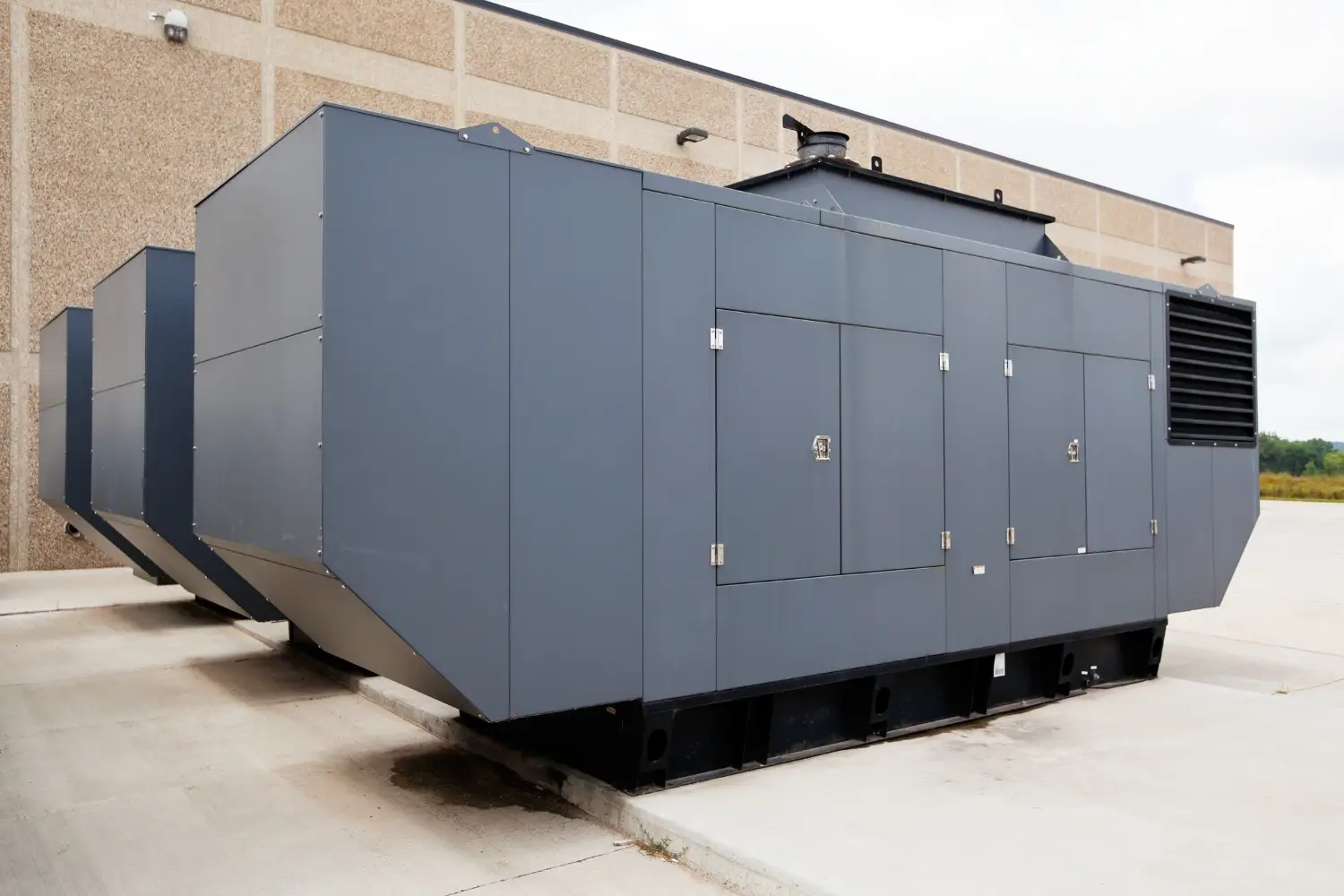Installing Generators in Industrial Environments
Installing generators in industrial settings involves more than simply acquiring a backup device. It is a strategic decision that requires technical analysis, precise sizing, and proper integration with the existing electrical infrastructure.
This guide brings together the key criteria for choosing and installing an industrial generator with safety, efficiency, and operational predictability.
1. When is a generator necessary?
Companies that cannot afford downtime due to power grid failures need generators to ensure process continuity. This includes:
- Facilities with uninterrupted production (24/7 shifts)
- Critical activities such as hospitals, data centers, supermarkets, factories, and construction sites
- Locations with unstable power supply
- Operations with high starting loads and unpredictable consumption peaks
Among others.
2. Calculating energy demand
Before specifying any generator, it is essential to size the company’s electrical demand. This includes:
- Rated power of equipment (W or kW)
- Daily usage time and monthly frequency
- Simultaneity factor between operating loads
- Total estimated demand in kWh and apparent power (kVA)
Basic consumption formula:
kWh = (Power × Hours/day × Days/month) ÷ 1,000
For generators, use apparent power:
kVA² = kW² + kVAr²
Always include a safety margin of 20% to 30% over the calculated value to handle load peaks and future expansions.
3. How to choose the ideal generator
The generator selection must consider the following criteria:
Application type
- Emergency: operates only during grid failures
- Standby/Prime: supports peak hours or scheduled maintenance
- Continuous: used daily, including as the main power source
Load type
- Resistive: lighting, heaters
- Inductive: motors, compressors, HVAC systems
- Critical loads: equipment sensitive to voltage or frequency variations
Power factor (PF)
Consider the average PF of the facility (typically between 0.8 and 0.95) to convert real power (kW) into total required power (kVA).
Power supply type
- Single-phase, two-phase, or three-phase, depending on the installation
- Check the operating voltage: 127 V, 220 V, 380 V, 440 V, etc.
Fuel type
- Diesel: most common in industrial applications for durability and autonomy
- Natural gas: suitable for companies connected to a piped gas network
- Others: biofuels, hybrid systems, depending on environmental policy or sustainability strategy
4. Technical specifications to consider
- Rated capacity in kVA and kW
- Frequency (60 Hz in Brazil)
- Response time for automatic start (if using ATS)
- Noise level and need for acoustic enclosure
- Fuel tank capacity and operating autonomy
- Starting system (manual or automatic)
- Compatibility with parallel systems (multiple generators)
- Monitoring and telemetry features
5. Generator installation: critical points
Installation must strictly follow technical standards (e.g., NBR 5410) and be performed by qualified professionals. Key aspects include:
Installation location
- Well-ventilated, covered area protected from weather (for open generator sets)
- Leveled floor resistant to vibration
- Safe distance from walls and flammable structures
- Easy access for refueling and maintenance
Electrical infrastructure
- Automatic or manual transfer switch (ATS)
- Protection against surges, short circuits, and overloads
- Effective grounding system
- Circuit breakers suited to generation capacity
Fuel and exhaust
- Fuel tank sized for at least 8 to 12 hours of continuous operation — with GERAFORTE, your generator comes from the factory with a built-in fuel tank
- Exhaust system properly sized for the engine with a safe outlet
- Forced ventilation assessment if necessary
6. Operation and maintenance
Generator reliability depends on standardized operation routines and preventive maintenance. Recommended practices include:
- Weekly load tests
- Monitoring of temperature, oil, fuel, and voltage
- Periodic replacement of filters and lubricants
- Logging runtime and recording any failures
7. Integration with energy management systems
Companies with complex energy requirements can integrate the generator into an Energy Management System (EMS), enabling:
- Remote performance monitoring
- Real-time fault detection
- Tracking of energy efficiency and peak usage
- Data-driven decision-making
Discover our products.





